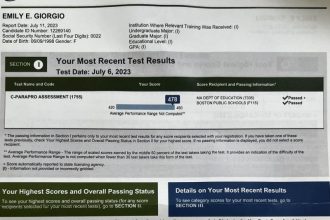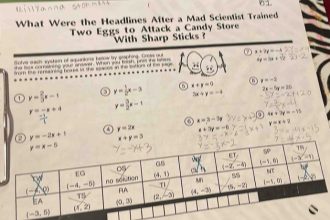A controlling idea is the backbone of any piece of writing. It serves as the central point around which all other information revolves. In simpler terms, it is the main message or theme that the author wants to convey to the readers. Understanding what a controlling idea is crucial for creating a focused and coherent piece of work. Let’s delve deeper into this concept to unlock its significance and practical application in writing.
What is a Controlling Idea
Have you ever wondered what makes a story or an essay stick together? It’s like the glue that holds everything in place, guiding the reader through the main message or theme. This glue is called the controlling idea. In this article, we will dive deeper into what a controlling idea is and why it’s essential in writing.
Understanding the Basics
Imagine you are planning a birthday party. You need to decide on a theme to make sure everything from the decorations to the games align with that theme. Similarly, a controlling idea in writing is like the theme of a story or an essay. It’s the main point that ties everything together.
For example, if you are writing a story about friendship, the controlling idea could be that true friends always support each other through thick and thin. Every detail in the story, from the characters’ actions to the dialogue, should support this central message.
Identifying the Controlling Idea
Spotting the controlling idea in a piece of writing can sometimes feel like discovering a hidden treasure. One way to identify the controlling idea is to ask yourself, “What is the main message the author wants me to take away from this?”
Authors often express the controlling idea explicitly through a thesis statement in essays or a moral lesson in stories. Other times, you may need to read between the lines and analyze the characters’ actions and the overall plot to uncover the controlling idea.
Examples of Controlling Ideas
Let’s consider some famous stories and their controlling ideas:
1. The Lion King: The controlling idea in this beloved movie is that courage and perseverance are essential qualities that help one overcome challenges and fulfill their destiny.
2. Charlotte’s Web: The controlling idea in this classic book is that friendship can transcend differences and bring out the best in us.
3. Martin Luther King Jr.’s “I Have a Dream” speech: The controlling idea in this iconic speech is that equality and freedom are fundamental rights that everyone should strive for.
Why Controlling Ideas Matter
Controlling ideas are like the guiding stars in the sky that help sailors navigate through rough waters. In writing, they serve as a roadmap for both the author and the reader, ensuring that the piece stays focused and delivers a clear message.
Without a controlling idea, a story or an essay can feel disjointed, like puzzle pieces scattered all over the place. Readers may struggle to understand the purpose of the writing and walk away feeling confused or unfulfilled.
The Power of Focus
Think of a controlling idea as a spotlight shining on the main stage of a play. It directs the audience’s attention to the most critical aspects of the performance. Similarly, a controlling idea focuses the reader’s attention on the central theme of the writing, making the message more impactful and memorable.
Creating Coherence
Coherence is like the thread that weaves through a tapestry, connecting all the different elements into a beautiful whole. A controlling idea provides this coherence in writing, ensuring that every paragraph, sentence, and word serves a purpose in conveying the main message.
How to Develop a Strong Controlling Idea
Now that you understand the importance of a controlling idea, let’s explore how you can develop a strong one for your own writing:
1. Brainstorm Ideas:
Start by brainstorming different themes or messages you want to convey in your writing. Consider what you are passionate about or what lessons you want to share with your readers.
2. Identify the Main Message:
Once you have a list of ideas, identify the central message or theme that resonates with you the most. This will be the foundation of your controlling idea.
3. Make it Specific:
A strong controlling idea is clear and specific. Avoid vague statements and narrow down your focus to a single, concise message that encapsulates the essence of your writing.
4. Ensure Alignment:
Review your writing to ensure that every aspect, from the introduction to the conclusion, supports your controlling idea. Remove any details or tangents that do not contribute to the main message.
5. Seek Feedback:
Share your writing with others and ask for feedback on whether your controlling idea is effectively conveyed. Constructive criticism can help you refine and strengthen your central message.
Controlling ideas are the backbone of effective writing, providing coherence and focus to your work. By understanding what a controlling idea is and how to develop a strong one, you can elevate your writing to new heights and captivate your readers with a clear and powerful message.
Next time you sit down to write a story or an essay, remember the importance of a controlling idea and let it guide you in crafting a compelling narrative that resonates with your audience.
Happy writing!
The controlling idea – à la Robert McKee
Frequently Asked Questions
What is a controlling idea?
A controlling idea is the main point or central theme that a writer wants to communicate to the audience. It serves as the foundation for the entire piece of writing, guiding the content and structure to ensure coherence and focus.
How is a controlling idea different from a topic?
While a topic is a general subject matter of a piece of writing, a controlling idea is more specific and provides a clear viewpoint or message about that topic. The controlling idea shapes the writer’s purpose and helps in delivering a strong thesis statement.
Why is identifying the controlling idea important in writing?
Identifying the controlling idea helps writers stay on track with their main argument or message throughout the piece. It allows for a cohesive flow of thoughts, prevents content from becoming scattered, and ensures that the writing remains focused and purposeful.
How can writers effectively develop a controlling idea?
To effectively develop a controlling idea, writers should first brainstorm their main message or argument, then craft a strong thesis statement that encapsulates this idea. Supporting details, evidence, and analysis should all contribute to reinforcing and clarifying the controlling idea throughout the writing.
Can a controlling idea evolve or change during the writing process?
Yes, a controlling idea can evolve or change as writers delve deeper into their topic or discover new perspectives. It is crucial for writers to remain flexible and open to refining or adjusting their controlling idea as they gain more insights or insights from their research and writing process.
Final Thoughts
In conclusion, a controlling idea is the main point or central theme that guides a piece of writing. It provides a clear focus and helps to unify the content. By identifying the controlling idea, readers can better understand the author’s purpose and message. Understanding what a controlling idea is essential for effective communication and writing clarity.






